Related Research Articles
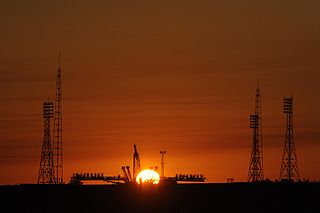
A spaceport or cosmodrome is a site for launching or receiving spacecraft, by analogy to a seaport for ships or an airport for aircraft. The word spaceport, and even more so cosmodrome, has traditionally been used for sites capable of launching spacecraft into orbit around Earth or on interplanetary trajectories. However, rocket launch sites for purely sub-orbital flights are sometimes called spaceports, as in recent years new and proposed sites for suborbital human flights have been frequently referred to or named "spaceports". Space stations and proposed future bases on the Moon are sometimes called spaceports, in particular if intended as a base for further journeys.

A sounding rocket or rocketsonde, sometimes called a research rocket or a suborbital rocket, is an instrument-carrying rocket designed to take measurements and perform scientific experiments during its sub-orbital flight. The rockets are used to launch instruments from 48 to 145 km above the surface of the Earth, the altitude generally between weather balloons and satellites; the maximum altitude for balloons is about 40 km and the minimum for satellites is approximately 121 km. Certain sounding rockets have an apogee between 1,000 and 1,500 km, such as the Black Brant X and XII, which is the maximum apogee of their class. For certain purposes Sounding Rockets may be flown to altitudes as high as 3,000 kilometers to allow observing times of around 40 minutes to provide geophysical observations of the magnetosphere, ionosphere, thermosphere and mesosphere. Sounding rockets have been used for the examination of atmospheric nuclear tests by revealing the passage of the shock wave through the atmosphere. In more recent times Sounding Rockets have been used for other nuclear weapons research. Sounding rockets often use military surplus rocket motors. NASA routinely flies the Terrier Mk 70 boosted Improved Orion, lifting 270–450-kg (600–1,000-pound) payloads into the exoatmospheric region between 97 and 201 km.

Esrange Space Center is a rocket range and research centre located about 40 kilometers east of the town of Kiruna in northern Sweden. It is a base for scientific research with high-altitude balloons, investigation of the aurora borealis, sounding rocket launches, and satellite tracking, among other things. Located 200 km north of the Arctic Circle and surrounded by a vast wilderness, its geographic location is ideal for many of these purposes.

The Swedish Space Corporation, SSC, also registered as Svenska rymdaktiebolaget, is a Swedish space services company. SSC operations consist of launches of sounding rockets and stratospheric balloons, tests of future generation rocket engines and new rocket fuels, operation and maintenance of space and aviation systems, as well as satellite communications through the use of SSC ground stations deployed around the world. SSC is also working on developing its Space Surveillance Tracking (SST) and Space Traffic Management (STM) programs with the aim to identify, assess and minimize risks of collisions and disruptions associated with space debris.
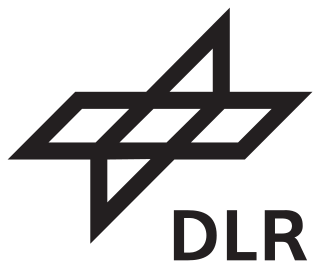
The German Aerospace Center is the national center for aerospace, energy and transportation research of Germany, founded in 1969. It is headquartered in Cologne with 35 locations throughout Germany. The DLR is engaged in a wide range of research and development projects in national and international partnerships.

Skylark was a family of British sounding rockets. It was operational between 1957 and 2005.
The Petrel was a British sounding rocket. The Petrel 1 was launched, like the Skua 1, with 3 Chick booster rockets. The Chick motors were fitted into a booster carriage that also carried the two parachutes that brought it back to earth for re-use. The Petrel 1 was 3.34 m long, had a diameter of 19 cm and reached a maximum altitude of 140 kilometres. It was fired from a 10-metre-long (33 ft) launch tube.

Malemute is the designation of an American sounding rocket family. The original Malemute had a maximum flight altitude of 165 km, a liftoff thrust of 57.00 kN, a total mass of 100 kg, a diameter of 0.41 m and a total length of 2.40 m. It was a single stage vehicle powered by a Thiokol Malemute TU-758 engine, operated by Sandia National Laboratories (SNL).
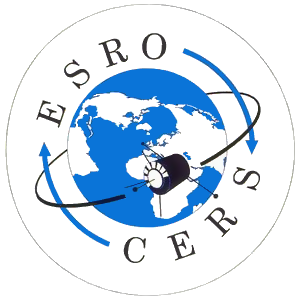
The European Space Research Organisation (ESRO) was an international organisation founded by 10 European nations with the intention of jointly pursuing scientific research in space. It was founded in 1964. As an organisation ESRO was based on a previously existing international scientific institution, CERN. The ESRO convention, the organisations founding document outlines it as an entity exclusively devoted to scientific pursuits. This was the case for most of its lifetime but in the final years before the formation of ESA, the European Space Agency, ESRO began a programme in the field of telecommunications. Consequently, ESA is not a mainly pure science focused entity but concentrates on telecommunications, earth observation and other application motivated activities. ESRO was merged with ELDO in 1975 to form the European Space Agency.

A Skylark tower was a tower used for the launch of earlier versions of Skylark rockets. As Skylark rockets had no guidance system and accelerated slowly, they required a safe launch tower with a height of at least 24 metres, with its own guidance system. Later versions of the Skylark rocket were equipped with a more powerful engine and therefore did not need such a large guidance tower for launch.

VSB-30 - "Veículo de Sondagem Booster – 30" or "Foguete Suborbital VSB-30" is the designation of a Brazilian sounding rocket, which replaced the Skylark rocket at Esrange.

Maxus is a sounding rocket that are used in the MAXUS microgravity rocket programme, a joint venture between Swedish Space Corporation and EADS Astrium Space Transportation used by ESA. It is launched from Esrange Space Center in Sweden and provides access to microgravity for up to 14 minutes.
A number of suborbital spaceflights were conducted during 2008. These consist mostly of sounding rocket missions and missile tests, and include other flights such as an ASAT firing. Between the start of the year and 16 July, at least 43 publicly announced suborbital spaceflights were conducted, the first of them on 11 January.
MASER is a sounding rocket that is used in the MASER microgravity research rocket programme, operated by the Swedish Space Corporation (SSC). The main customer is the European Space Agency (ESA), particularly the EMIR and ELIPS programmes. MASER stands for "MAterials Science Experiment Rocket".

The Mobile Rocket Base, abbreviated MORABA, is a department of the DLR Space Operations and Astronaut Training in Oberpfaffenhofen near Munich. Since the 1960s, the MORABA has performed scientific high altitude research missions with unmanned rockets and balloons, and has developed the required mechanical and electrical systems. Their operational areas include upper atmosphere research, microgravity research, astronomy, geophysics, materials science, as well as hypersonic research.
Mapheus 5 was a German Aerospace Center VSB-30 sounding rocket launched to 253 km (157 mi) on 30 June 2015 from the Esrange Space Center in Sweden.
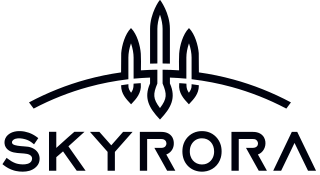
Skyrora Ltd is a British private space company based in Glasgow, Scotland, since 2017.

The REXUS/BEXUS programme is a cooperation between the German Aerospace Center (DLR) and the Swedish National Space Agency (SNSA) that allows students from higher education institutions to study experiments on board sounding rockets and stratospheric balloons. Through a collaboration with the European Space Agency (ESA), the opportunity has been made available for students across all ESA Member States, Slovenia and Canada. The Swedish Space Corporation (SSC) and the Mobile rocket base (MORABA) of DLR are responsible for the launch. Students are getting support from experts of DLR, ESA, SSC and ZARM. The programme started in 2007.
The German space programme is the set of projects funded by the government of Germany for the exploration and use of outer space. The space programme is run by the German Aerospace Center, who conduct research, plan, and implement the programme on behalf of the German federal government.
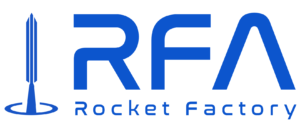
Rocket Factory Augsburg AG (RFA) is a German NewSpace start-up located in Augsburg. It was founded in 2018 with the mission to build rockets just like cars. Its multistage rocket, RFA One, is currently under development. As of November 2023, it had been scheduled to launch during the summer of 2024; however, an anomaly during a first stage static fire test in August 2024 resulted in destruction of the stage, and the launch has been postponed.
References
- ↑ "Europe prepares new technologies for future launchers". SpaceDaily. Retrieved 30 November 2011.
- ↑ "DLR - Space Administration - TEXUS 49 lifts off with four German experiments on board". www.dlr.de.
- ↑ DLR. "DLR Portal". DLR Portal.
- ↑ DLR. "DLR Portal". DLR Portal.
- ↑ "TEXUS 51/52". 29 August 2013.
- ↑ "Blog". www.grimm-space-research.com. Archived from the original on 2018-12-05. Retrieved 2018-09-20.
- 1 2 "TEXUS 54/55 successfully launched from Esrange Space Center". 31 May 2018.